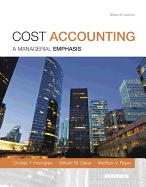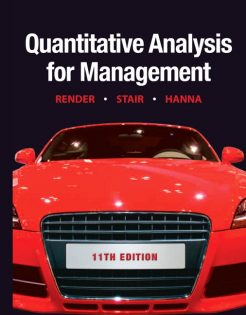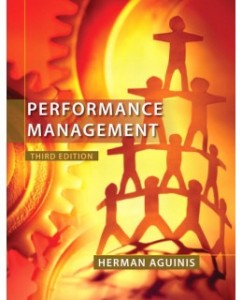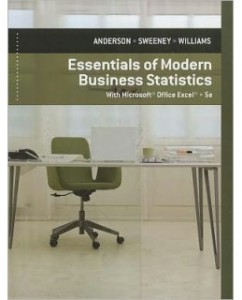Description
***THIS IS NOT THE ACTUAL BOOK. YOU ARE BUYING the Test Bank in e-version of the following book***
– The Test Bank is what most professors use an a reference when making exams for their students, which means there’s a very high chance that you will see a very similar, if not exact the exact, question in the test!
– The file is either in pdf, doc, rtf or zipped in the package and can easily be read on PCs and Macs.
– Delivery is INSTANT. You can download the files IMMEDIATELY once payment is done.
We also faced similar difficulities when we were students, and we understand how you feel.
But now, with the Test bank for Cost Accounting 15e by Charles T. Horngren 9780133803815, you will be able to
* Anticipate the type of the questions that will appear in your exam.
* Reduces the hassle and stress of your student life.
* Improve your studying and also get a better grade!
* Get prepared for examination questions.
* Can save you time and help you understand the material.
This is the quality of service we are providing and we hope to be your helper.
Delivery is in the next moment. Test Bank is accurate.
If you have any questions, or would like a receive a sample chapter before your purchase, please contact us at inquiry@testbankcorp.com
Cost Accounting, 15e (Horngren/Datar/Rajan)
Chapter 1 The Manager and Management Accounting
Objective 1.1
1) Management accounting ________.
A) focuses on estimating future revenues, costs, and other measures to forecast activities and their results
B) provides information about the company as a whole
C) reports information that has occurred in the past that is verifiable and reliable
D) provides information that is generally available only on a quarterly or annual basis
Answer: A
Diff: 1
Objective: 1
AACSB: Analytical thinking
2) Managers use management accounting information to ________.
A) help external users such as investors, banks, regulators, and suppliers
B) communicate, develop, and implement strategies
C) communicate a firm’s financial position to investors, banks, regulators, and other outside parties
D) ensure that financial statements are consistent with the SEC rules
Answer: B
Diff: 1
Objective: 1
AACSB: Analytical thinking
3) Financial accounting ________.
A) focuses on the future and includes activities such as preparing next year’s operating budget
B) must comply with GAAP (generally accepted accounting principles)
C) is the process of measuring, analyzing, and reporting financial and nonfinancial information related to the costs of acquiring or using resources in an organization
D) is prepared for the use of department heads and other employees
Answer: B
Diff: 1
Objective: 1
AACSB: Analytical thinking
4) The primary user of financial accounting information is a ________.
A) factory shift supervisor
B) distribution manager
C) current shareholder
D) department manager
Answer: C
Diff: 1
Objective: 1
AACSB: Analytical thinking
5) The primary user of management accounting information is a(n) ________.
A) the controller
B) a shareholder evaluating a stock investment
C) bondholder
D) external regulator
Answer: A
Diff: 1
Objective: 1
AACSB: Analytical thinking
6) Financial accounting provides the primary source of information for ________.
A) decision making in the finishing department
B) improving customer service
C) preparing the income statement for shareholders
D) planning next year’s operating budget
Answer: C
Diff: 1
Objective: 1
AACSB: Analytical thinking
7) Which of the following is true of management accounting information?
A) It focuses on documenting past business actions of a firm.
B) It is prepared based on SEC rules and FASB accounting principles.
C) It is prepared for shareholders.
D) It co-ordinates product design, production, and marketing decisions.
Answer: D
Diff: 2
Objective: 1
AACSB: Analytical thinking
8) Which of the following statements refers to management accounting information?
A) There are no regulations governing the reports.
B) The reports are generally delayed and historical.
C) The audience tends to be stockholders, creditors, and tax authorities.
D) It primarily measures manager’s compensation on reported financial results.
Answer: A
Diff: 2
Objective: 1
AACSB: Analytical thinking
9) Which of the following groups would be least likely to receive detailed management accounting reports?
A) stockholders
B) sales managers
C) production supervisors
D) distribution managers
Answer: A
Diff: 1
Objective: 1
AACSB: Analytical thinking
10) Management accounting information typically includes ________.
A) tabulated results of customer satisfaction surveys
B) the cost of producing a product
C) the percentage of units produced that are defective
D) All of these answers are correct.
Answer: D
Diff: 1
Objective: 1
AACSB: Application of knowledge
11) Cost accounting ________.
A) measures the costs of acquiring or using resources in an organization
B) helps managers to develop, communicate, and implement strategies
C) coordinates product design, production, and marketing decisions and evaluate a company’s performance
D) communicates information to investors, banks, regulators, and other outside parties
Answer: A
Diff: 1
Objective: 1
AACSB: Analytical thinking
12) Which of the following differentiates cost accounting and financial accounting?
A) The primary users of cost accounting are the investors, whereas the primary users of financial accounting are the managers.
B) Cost accounting deals with product design, production, and marketing strategies, whereas financial accounting deals mainly with pricing of the products.
C) Cost accounting measures only the financial information related to the costs of acquiring fixed assets in an organization, whereas financial accounting measures financial and nonfinancial information of a company’s business transactions.
D) Cost accounting measures information related to the costs of acquiring or using resources in an organization, whereas financial accounting measures a financial position of a company to investors, banks, and external parties.
Answer: D
Diff: 2
Objective: 1
AACSB: Analytical thinking
13) Which of the following is true of financial accounting information?
A) It is prepared based on cost-benefit analysis.
B) It is primarily used by managers to make internal business decisions.
C) It focuses on the past-oriented financial performance of a company.
D) It only measures the cash transactions of a company.
Answer: C
Diff: 2
Objective: 1
AACSB: Analytical thinking
14) A data warehouse or infobarn ________.
A) is reserved for exclusive use by the CFO
B) is primarily used for financial reporting purposes
C) stores information used by different managers for multiple purposes
D) gathers only nonfinancial information
Answer: C
Diff: 1
Objective: 1
AACSB: Analytical thinking
15) Which of the following is true of cost accounting?
A) It provides financial information about cash-based transactions only.
B) It accounts only the financial information of business transactions, not the nonfinancial information.
C) It provides financial information regarding the cost of acquiring resources.
D) It must be prepared in accordance with GAAP.
Answer: C
Diff: 2
Objective: 1
AACSB: Analytical thinking
16) Which of the following deals with management accounting?
A) identifying the costs of acquiring the resources of the company
B) developing budgets
C) preparing the income statement
D) preparing the statement of cash flows
Answer: B
Diff: 1
Objective: 1
AACSB: Analytical thinking
17) Financial accounting is concerned primarily with ________.
A) external reporting to investors, creditors, and government authorities
B) cost planning and cost controls
C) product design and marketing strategies
D) providing information for strategic and tactical decisions
Answer: A
Diff: 1
Objective: 1
AACSB: Analytical thinking
18) Financial accounting provides a historical perspective, whereas management accounting emphasizes ________.
A) the future
B) past transactions
C) a current perspective
D) reports to shareholders
Answer: A
Diff: 1
Objective: 1
AACSB: Analytical thinking
19) An Enterprise Resource Planning System can best be described as ________.
A) a collection of programs that use a variety of unconnected databases
B) a single database that collects data and feeds it into applications that support each of the company’s business activities, such as purchases, production, distribution, and sales
C) a database that is primarily used by a purchasing department to determine the correct amount of a particular supply item to purchase
D) a sophisticated means of linking two or more companies to facilitate their planning processes
Answer: B
Diff: 2
Objective: 1
AACSB: Analytical thinking
20) The approaches and activities of managers in short-run and long-run planning and control decisions that increase value for customers and lower costs of products and services are known as ________.
A) value chain management
B) enterprise resource planning
C) cost management
D) customer value management
Answer: C
Diff: 1
Objective: 1
AACSB: Analytical thinking
21) Financial accounting information focuses on internal reporting.
Answer: FALSE
Explanation: Management accounting information focuses on internal reporting and financial accounting focuses on external reporting.
Diff: 1
Objective: 1
AACSB: Analytical thinking
22) Cost accounting provides information for both management accounting and financial accounting professionals.
Answer: FALSE
Explanation: Cost accounting provides information for both management accounting and financial accounting professionals.
Diff: 2
Objective: 1
AACSB: Analytical thinking
23) Management accounting information and reports do not have to follow set principles or rules such as GAAP.
Answer: TRUE
Diff: 1
Objective: 1
AACSB: Analytical thinking
24) Management accounting ensures communication of an organization’s financial position to investors, banks, and regulators.
Answer: FALSE
Explanation: Financial accounting, not management accounting, ensures communication of an organization’s financial position to investors, banks, and regulators.
Diff: 1
Objective: 1
AACSB: Analytical thinking
25) The balance sheet, income statement, and statement of cash flows are used for financial accounting, and also for management accounting.
Answer: TRUE
Diff: 1
Objective: 1
AACSB: Analytical thinking
26) Financial accounting is broader in scope than management accounting.
Answer: FALSE
Explanation: Management accounting is broader in scope than financial accounting.
Diff: 1
Objective: 1
AACSB: Analytical thinking
27) Cost accounting measures and reports short-term, long-term, financial, and non financial information.
Answer: TRUE
Diff: 2
Objective: 1
AACSB: Analytical thinking
28) Cost accounting is the process of measuring, analyzing, and reporting financial and nonfinancial information related to the costs of acquiring or using resources in an organization.
Answer: TRUE
Diff: 1
Objective: 1
AACSB: Analytical thinking
29) Management accounting has to strictly follow the rules of generally accepted accounting principles for the purposes of measurement and reporting.
Answer: FALSE
Explanation: Internal measures and reports do not have to follow GAAP.
Diff: 2
Objective: 1
AACSB: Analytical thinking
30) For management accounting, internal measurement and reporting are based on cost-benefit analysis.
Answer: TRUE
Diff: 2
Objective: 1
AACSB: Analytical thinking
31) An Enterprise Resource Planning (ERP) System is a single database that collects data and feeds into applications that support each of the company’s business activities, such as purchases, production, distribution, and sales.
Answer: TRUE
Diff: 1
Objective: 1
AACSB: Analytical thinking
32) Financial accounting provides an organization’s past-oriented information such as the previous years’ financial statements.
Answer: TRUE
Explanation: Financial accounting provides an organization’s past-oriented information such as the previous years’ financial statements.
Diff: 1
Objective: 1
AACSB: Analytical thinking
33) Cost management not only helps reducing costs but also improving customer satisfaction and the quality of a firm’s products.
Answer: TRUE
Diff: 1
Objective: 1
AACSB: Analytical thinking
34) For each report listed below, identify whether the major purpose of the report is for (1) routine internal reporting, (2) nonroutine internal reporting, or for (3) external reporting to investors and other outside parties.
Item:
a. study detailing sale information of the top-ten selling products
b. weekly report of total sales generated by each store in the metropolitan area
c. annual Report sent to shareholders
d. monthly report comparing budgeted sales by store to actual sales
Answer:
a. (2) nonroutine internal reporting
b. (1) routine internal reporting
c. (3) external reporting to investors and other outside parties
d. (1) routine internal reporting
Diff: 3
Objective: 1
AACSB: Application of knowledge
35) Describe management accounting and financial accounting.
Answer: Management accounting provides information to internal decision makers of the business such as top executives, managers, sales representatives, and production supervisors. Its purpose is to help managers predict and evaluate future results. Reports are generated often and usually broken down into smaller reporting divisions such as department or product line. There are no rules to be complied with since these reports are for internal use only. Management accounting embraces more extensively such topics as the development and implementation of strategies and policies, budgeting, special studies and forecasts, influence on employee behavior, and nonfinancial as well as financial information.
Financial accounting, by contrast, provides information to external decision makers such as investors and creditors. Its purpose is to present a fair picture of the financial condition of the company. Reports are generated quarterly or annually and report on the company as a whole. The financial statements must comply with GAAP (generally accepted accounting principles). A CPA audits, or verifies, that GAAP is being followed.
Diff: 3
Objective: 1
AACSB: Analytical thinking
36) Cost accounting provides information for both management accounting and financial accounting professionals. Explain.
Answer: Cost accounting is the process of measuring, analyzing, and reporting financial and nonfinancial information related to the costs of acquiring or using resources in an organization. For example, calculating the cost of a product is a cost accounting function that meets both the financial accountant’s inventory-valuation needs and the management accountant’s decision-making needs such as deciding how to price products and choosing which products to promote.
Diff: 3
Objective: 1
AACSB: Analytical thinking
37) Is it possible to have an active cost management program without an Enterprise Resource Planning (ERP) System?
Answer: Yes, an active cost management program can occur without an Enterprise Resource Planning (ERP) System. Cost management is a philosophy that guides management in their short-run and long-run planning and control decisions that increase value for customers and lower costs of products and services. Cost management is not dependent on any particular system or database, but it is rather an overall philosophy of operation.
Diff: 2
Objective: 1
AACSB: Analytical thinking
38) What competitive advantage could a company obtain from a successful cost management program?
Answer: There are three broad outcomes from a successful cost management program: 1) costs are reduced with no loss in customer value. In this scenario, a company might gain a competitive advantage by lowering its price with no loss in profit, or maintain the same price and increase profit; 2) customer value is increased with no change in costs. This scenario might increase customer satisfaction resulting in increased customer loyalty and perhaps increase the overall demand for the product; 3) customer value might be increased while costs are reduced simultaneously. This scenario would result in the benefits described in both 1) and 2).
Diff: 3
Objective: 1
AACSB: Analytical thinking
Objective 1.2
1) Which of the following statements concerning an organization’s strategy is true?
A) Strategy specifies how an organization matches its own capabilities with the opportunities in the marketplace to accomplish its objectives.
B) Cost accountants formulate strategy in an organization since they have more inputs about costs.
C) A good strategy will always overcome poor implementation.
D) Businesses usually follow one of two broad strategies: offering a quality product at a high price, or offering a unique product or service priced lower than the competition.
Answer: A
Diff: 2
Objective: 2
AACSB: Analytical thinking
2) Strategy specifies ________.
A) how an organization matches its own capabilities with the opportunities in the marketplace
B) standard procedures to ensure quality products
C) incremental changes for improved performance
D) the demand created for products and services
Answer: A
Diff: 2
Objective: 2
AACSB: Analytical thinking







Reviews
There are no reviews yet.